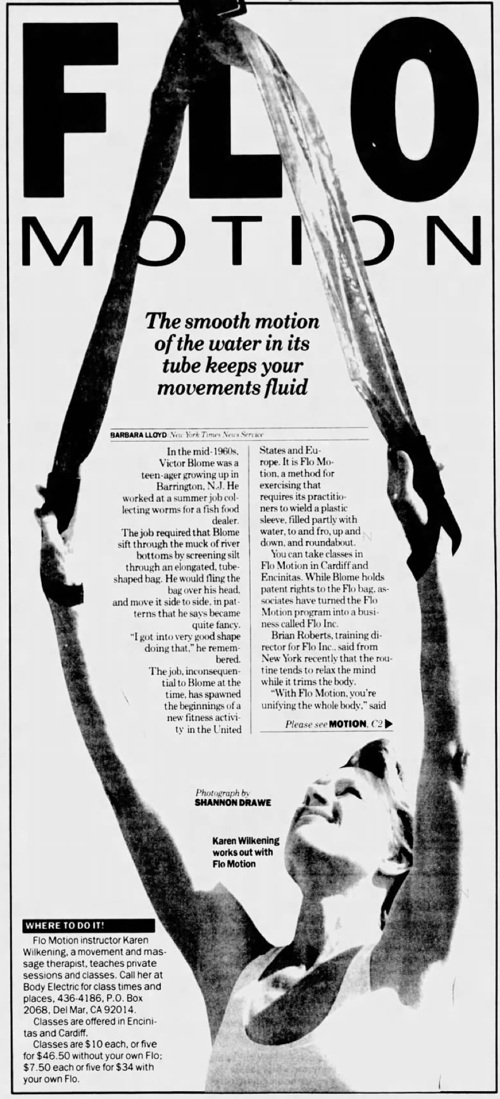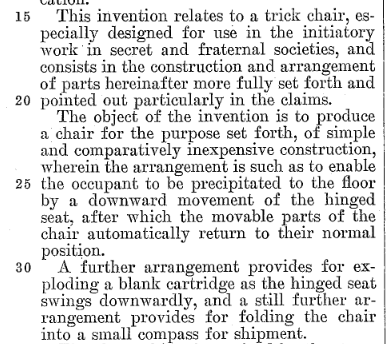Weird Universe Blog — April 12, 2024
Snakes on Guard
Posted By: Paul - Fri Apr 12, 2024 -
Comments (0)
Category: Domestic | Reptiles, Snakes, Worms and Other Slithery Things | 1960s | United Kingdom
April 11, 2024
Coin-Toss Experiment
Is a coin toss truly random? Not according to the "D-H-M model" which proposes that a tossed coin is slightly more likely to land on the same side that it started.To test this model, a team of researchers at the University of Amsterdam arranged for a group of subjects to flip coins a total of 350,757 times. Their conclusion: "the data reveal overwhelming statistical evidence for the presence of same-side bias."
What this means as a money-making strategy:
More info: "FAIR COINS TEND TO LAND ON THE SAME SIDE THEY STARTED: EVIDENCE FROM 350,757 FLIPS"
Posted By: Alex - Thu Apr 11, 2024 -
Comments (5)
Category: Money | Experiments
Miss Brick Throw of 1959
We've looked at the humor of DJ Rege Cordic at Radio Station KDKA in a previous post.The home page of Rege Cordic.
But here's a stunt not covered there.
He decided to stage a gag beauty contest for "Miss Brick Throw of 1959."
It was announced in 1958 in BILLBOARD.

Eventually a winner was chosen, "Miss Twerpie Walker," and a fake magazine was printed for the occasion.


Listen to three minutes of the gag here. NOTE: sound file begins to play automatically.
Posted By: Paul - Thu Apr 11, 2024 -
Comments (2)
Category: Awards, Prizes, Competitions and Contests | Beauty, Ugliness and Other Aesthetic Issues | Humor | Pranks | Radio | Regionalism | 1950s
April 10, 2024
Song about the human dimensions of the oceans
From the YouTube description:The singer really pulls out all the stops starting about 45 seconds in. But I'm stumped about what scientific concepts the song is expressing. Is the singer trying to sound like a humpback whale?
Posted By: Alex - Wed Apr 10, 2024 -
Comments (0)
Category: Music | Oceans and Maritime Pursuits | Science
Mr. Squiggle
All is explained at the Wikipedia page.Weird as the newer version is, the 1950s show was even weirder. Go to this link, for a non-embeddable sample.
Posted By: Paul - Wed Apr 10, 2024 -
Comments (0)
Category: Art | Puppets and Automatons | Television | Space Travel | Australia | Twentieth Century
April 9, 2024
Flo Motion
Flo Motion was a brief-lived exercise fad in the early 1990s. The idea was to get in shape by swinging a bag of water around.Seems like a bit of a gimmick, which I suppose is why the fad didn't last long.

Spokane Chronicle - Sep 25, 1991

Melbourne Age - Jun 16, 1991

Escondido Times-Advocate - Mar 8, 1991
Posted By: Alex - Tue Apr 09, 2024 -
Comments (2)
Category: Exercise and Fitness | 1990s
Trick Chair
Bang! And down goes the victim!Full patent here.


Posted By: Paul - Tue Apr 09, 2024 -
Comments (2)
Category: Clubs, Fraternities and Other Self-selecting Organizations | Patents | 1900s | Pranks
April 8, 2024
Harmonica Record
Obscure world record: longest time playing the harmonica while sitting in a chair balanced on top of three wine bottles. Set by Michel Perrigaud in 1959, who played for seven-and-a-half hours.
Albuquerque Journal - Jan 29, 1959
Posted By: Alex - Mon Apr 08, 2024 -
Comments (1)
Category: Music | World Records | 1950s
Resonating Life Which Continues to Stand
The artwork's homepage, which explains:The resonating ovoids continue to stand wherever they are. The ovoids continue to stand even if they are pushed over by waves, blown by the wind, or pushed by people. When an ovoid is pushed over, it rises back up on its own and shines brightly as it produces a tone. The light and tone continues to resonate out to other ovoids and trees nearby.
If a wave of light comes from afar, it signifies the presence of people, waves, or wind there. People gain a heightened sense of awareness of the existence of other people in the same space and the environment.
When it is quiet and the wind is not blowing and the people nearby are not interacting with the ovoids, their lights begin to flicker slowly.
Posted By: Paul - Mon Apr 08, 2024 -
Comments (0)
Category: Art | Asia | Twenty-first Century
April 7, 2024
Eclectric Oil
Dr. Thomas' Eclectric Oil was widely sold as a cure-all in the second half of the nineteenth century and well into the twentieth. This was even though, as Wikipedia notes, it "mostly contained common ingredients such as turpentine and camphor oil."Some of the things it supposedly cured included rheumatism, lame backs, sore throats, coughs and colds, throat and lung disease, and asthma. It could even cure "chicken flesh wounds" (see ad below).
Wikipedia notes that the name Eclectric Oil was "likely a portmanteau of the words 'eclectic' and 'electric', alluding to the then-popular belief that electricity had curative powers." Of course, the oil was not electric in any way.


image source: wellcome collection

Canadian Poultry Review - Apr 1926
Posted By: Alex - Sun Apr 07, 2024 -
Comments (0)
Category: Patent Medicines, Nostrums and Snake Oil | Nineteenth Century









